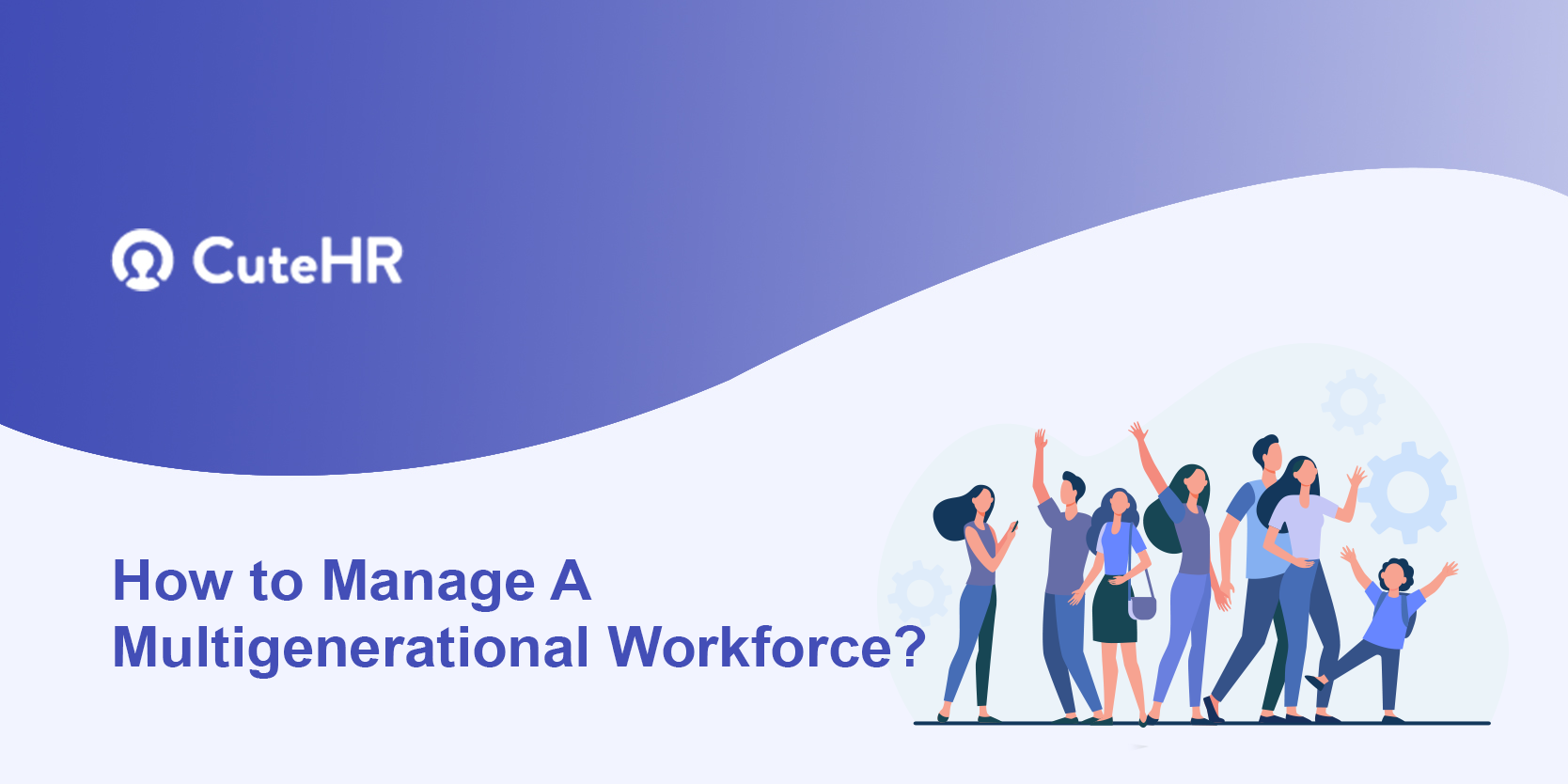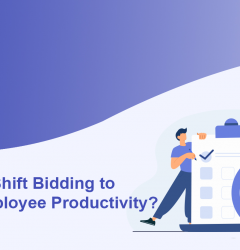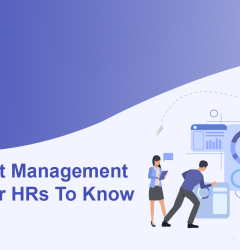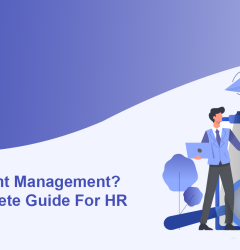22 Jun

Did you know? By 2025, Millennials Will Make-up 75% of the Global multigenerational Workforce.
They say that the only constant in life changes, and this is certainly true for the work field. For the first time in recent history, five generations may be present in the workplace at the same time. The multigenerational workforce allows grandparents and grandchildren to work together in the same area.
Can employees of various generations smoothly integrate their skills and experiences to build a well-oiled professional machine? Or are disputes caused by generational differences unavoidable? The solution is dependent on the competence of the manager in charge to manage multigenerational workforce.
Even though we hear a lot about diversity and inclusion in the workplace, no element highlights disparities more than age. Each age has its own set of traits, ranging from music tastes to cultural attitudes, which can sometimes clash with workers from different generations.
Don’t stop reading just yet; there are a lot of things you should know about the multigenerational workforce. Let’s dive into the blog without wasting any time.
Table of Contents
What is a Multigenerational Workforce?
For the time being, it is not a word heard on the newscast or within the halls of academia. However, as we enter the third decade of the twenty-first century, the “multigenerational workforce” will undoubtedly become one of the most discussed human resources phrases.
In its widest sense, the phrase refers to a work environment in which people of many generations utilize their professional talents. The concept has attracted great interest in recent years since an increasing number of organizations involve employees from many generations.
Because each generation has different interests, requirements, and expectations, savvy managers will customize their employee engagement techniques. Whether it was a revolutionary global event or a cultural phenomenon that took root, each of the four generations that follow contributes something unique to the workplace.
Baby Boomer: 1946-1964
According to Gallup, baby boomers made up over one-third of the U.S. workforce in 2013, but that figure will decline in the coming years. According to Gallup, nearly 3.8 million individuals will turn 65 each year between 2011 (when the oldest boomers reached the age of 65) and 2029 (when the youngest boomers will turn 65), or about 10,000 per day.
The Baby Boomers are the first generation to reject the customary retirement age of 65. For the first time in our history, four generations are represented in the American labor force. Many firms may anticipate their Baby Boomer employees staying on the job for considerably longer than any preceding generation.
Generation X: 1965-1979
Despite the focus on baby boomers and millennials, Generation X has had a significant influence on the American workforce. The generation that brought us grunge music and a profound distrust of authority now holds several positions of power in both the business and governmental sectors.
Even though many members of Generation X have accomplished much in business and have had a positive impact on promoting cultural issues, the Harvard Business Review recently reported that over the last five years, roughly two-thirds of Generation X leaders had received no more than one promotion. Furthermore, the promotion rate for Generation X workers is 30% lower than that of millennials.
The message for management is to understand how to communicate with members of Generation X and to develop employee engagement tactics to keep them for longer periods. Gen Xers have a high level of education and the capacity to swiftly master new technology.
Millennials: 1980-1995
Millennials surpassed Baby Boomers and Generation Xers to become the greatest generational representation in the American workforce in 2017. When it comes to counseling managers on how to manage employees, no previous generation has gotten greater attention from human resources professionals.
As Millennials have gotten older, their priorities have evolved, and in many cases, substantially. With the oldest Millennials about to age 40 in 2020, it is time to rethink what motivates the most powerful generation in the American workforce.
Despite their age, Millennials bring idealism, work-life balance, and an emphasis on career progression to the professional table.
Generation Z: 1996 to 2015
Although not yet the working force that Millennials are, Generation Z will someday have a significant influence on the American workplace. The first members of the generation to enter the American labor force demonstrated distinctions from their Millennial peers. Members of Generation Z want to study with a purpose, which implies they want to link experiences back to the initial goal.
Most members of Generation Z are tech-savvy, having been born following the Internet’s growth. The generation will be the last with a Caucasian majority. As a result, managers will need to do more to create a multicultural work atmosphere. Generation Z individuals, unlike Millennials, take an entrepreneurial approach to problem-solving in the workplace.
They are capable of multitasking and prefer to work individually on collaborative assignments.
Advantages of the Multigenerational Workforce
Having a diverse range of ages on your team brings value to the organization. Younger workers are used to fast-evolving technology and responding to the changes it causes. Similarly, more mature personnel have information from their experience that may guide decision-making. The combination of new ideas with experience-based wisdom leads to enhanced productivity.
There are many advantages to a multigenerational workforce, including:
Opportunities for learning/mentoring
The more varied a team, the more opportunity for members to engage and learn from one another’s perspectives. This offers possibilities for mutually beneficial mentorship. Those with greater experience can counsel younger colleagues on career advancement. Furthermore, the new trend of reverse/cross-generational mentorship allows more junior staff to teach more senior employees about current trends and technologies.
Transferred knowledge and retention
Each generation’s awareness and skills better equip the firm to fulfill its future leadership demands. Tacit expertise is retained inside the organization through a strong internal talent pipeline. Instead of external recruitment, internal advancement is emphasized.
Multiple viewpoints
Different generations may have different opinions on employment obligations. Sharing viewpoints inside and across teams brings a diverse set of knowledge and skills to bear on creativity.
Problem-solving talents
Problems are solved creatively by combining numerous viewpoints and diverse skills. Life experience shapes how we react to and interact with people in the face of adversity and conflict. As a result, age-diverse teams may provide a range of solutions to challenges.
Importance of Multigenerational Workforce
A general definition of an engaged employee may be found on Wikipedia. The definition of an engaged employee is “one who is completely absorbed in their work and consequently performs well” takes meaningful action to enhance the reputation and interests of the business.” An engaged employee is enthusiastic about the organization and its principles. A disengaged employee, on the other hand, might vary from performing the absolute minimum at work (known as ‘coasting’) to actively harming the company’s job production and reputation.”
Many managers mix up concepts like employee engagement, employee happiness, and employee experience. Employee engagement, on the other hand, is all about how an individual interacts in the workplace, not how an employee feels about working at Company X. Knowing how to engage individuals of the Baby Boomer generation, on the other hand, necessitates a different technique than engaging members of the Millennial generation.
In a multigenerational workforce, how important is employee engagement? According to a poll done at a firm with over 500 workers, over three-quarters of managers say employee engagement is one of the “most essential variables” determining the company’s performance.
Employees who are engaged at work are motivated at work as well.
Multigenerational Workforce Challenges
Although a multigenerational workforce is generally favorable, it can present certain challenges.
The following are some of the most pressing multigenerational workforce issues:
Communication difficulties
There are likely to be generational gaps in preferred communication strategies and tone perception. Methods for reaching employees are many, thanks to the availability of email, instant messaging, and phone and video chats. Choosing the ideal technique to connect with team members and minimize communication breakdowns necessitates significant thought.
Negative stereotypes
People have preconceived beliefs about persons of a different age group, as with any form of diversity. Older generations may view younger generations as entitled, oversensitive “snowflakes.” Younger employees may believe that their elders are rigid and fearful of embracing technology. These broad generalizations create unfavorable prejudices, which can lead to toxic business culture, differential treatment, ageism, and legal issues.
Employee expectations vary
People of various generations may not have the same work aspirations. People’s approaches to carrying out their responsibilities, learning from training, and having their performance evaluated might differ. Furthermore, what is deemed an acceptable pay package may differ from generation to generation.
Age
We may debate gender, ethnic, and religious diversity until our faces turn blue. The reality is that the most significant difference between workers is their age. A 60-year-old Caucasian guy has more characteristics than a 60-year-old African American female than a 30-year-old Caucasian male. People of a similar age group tend to hang out together. They have similar childhood experiences and appreciate many of the same musical genres.
The ultimate objective of managing a multigenerational workforce is to identify shared interests and dislikes among various age groups. Perhaps it’s a passion for soccer or the pleasure of a gorgeous bike ride. Although age is the ultimate obstacle to managing a multigenerational workforce, it is not inevitable.
Managing a Multigenerational Workforce
HR is essential in ensuring that the firm crosses the age divide and has efficient, cohesive teams. How do you overcome the hurdles of a multigenerational workforce to enjoy the benefits? How do you manage multigenerational workforce?
Improve your Employee Value Proposition (EVP)
Is your EVP appealing to people of all ages? Employees of all ages might be pleased with their jobs because of the cultural benefits. To appeal to a wide range of people, we provide a desirable work environment and a wide range of benefits.
Wellness policies and initiatives, as well as work/life balance and paid time off, are appealing to people of all ages. Professional growth, career progression, community service opportunities, financial investment programs, and social activities, on the other hand, might address various wants to appeal to people of all ages.
Adapt to various communication methods
Communication is essential for harmony and productivity. The goal is to guarantee that everyone has access to the same information.
Language differences between generations have always existed, although younger workers used to integrate into their employer’s communication conventions. Because internet communication is quickly reshaping culture, younger generations have far more power. Workplace communication has evolved into a meeting in the middle to establish common ground and integrate diverse styles.
When it comes to your brand voice, you should have consistency in company-wide communications and certain standards, but you may seek methods to accommodate varied styles on a smaller scale. Allow leaders to choose between text-based and video communication techniques based on the needs of their staff. Managers should have the freedom to address one-on-ones as they see fit.
Improve your inclusive hiring process
When hiring, you should endeavor to eradicate age prejudice from source to offer. Begin by educating hiring managers, then broaden your recruitment channels to include as many as feasible. (College job fairs should not be your main source for filling entry-level employment.)
The phrasing of employment advertisements may hinder age diversity. Examine them for inclusiveness. Use neutral language and avoid terminology or phrases that are aimed toward a certain generation. You should also add photographs and videos of people of various ages on your job site.
Dates, names, and other resume elements can all be used to deduce demographic information. If you can create computer programs that employ AI to screen, you can prevent these prejudices. A mix of younger and older recruiting managers screening applications and conducting interviews can also help level the playing field.
Provide feedback
Because not everyone is comfortable providing unsolicited input, you must devise methods to promote honest feedback that shows the pulse of your multigenerational workforce. You should provide these chances through surveys, performance evaluations, one-on-one meetings, or other innovative techniques.
You may understand what you need to improve to effectively manage multigenerational workforce by learning how engaged individuals feel and how they perform.
Allow for a variety of working styles and demands.
There is no one-size-fits-all solution for addressing how workers of any age can perform optimally. Organizations that can adapt to their employees’ demands are more likely to recruit and retain the best talent available.
Employees of all ages can benefit from flexible work hours
Offering flexible schedules or part-time work helps carers to spend more time with their families or facilitates a gradual transition to retirement.
Previously, the inclination for virtual employment may have been attributed to a generational aspect, but the COVID-19 epidemic has changed that. The independence of remote work has been appreciated by a wide spectrum of people, and companies are embracing this fact.
Clarify and reaffirm expectations
A common goal brings individuals together while minimizing their differences. Employees, regardless of age, want to understand the company’s aims and the particular role they must play in these initiatives.
Managers must create channels for communicating expectations continuously. They should also provide workers certainty about what they may expect from the organization as a whole and them.
Constructive feedback from executives encourages employees to be accountable and improve their abilities. This form of guidance gives employees the assurance that they know where they’re going.
Combat racism and stereotypes
There is generational racism and stereotypes. It’s far preferable to reinterpret them than to pretend they don’t exist. Although it is incorrect to presume that individuals are “entitled,” “stubborn,” “idealistic,” or “workaholics” simply because of their age, the backdrop of various life events does mold people in certain ways.
Recognizing and considering differences helps you to capitalize on the qualities of each generation. Role-playing activities, for example, may be required to challenge age-based preconceptions. Bringing incorrect impressions to light makes individuals more conscious of their preconceptions, which may lead to more harmonious multigenerational collaboration.
You should endeavor to eliminate racism and stereotypes at all phases of the employment lifecycle. Aside from the hiring process, you must keep an eye out for prejudice in your HR and people policies, as well as among workers and leadership techniques.
Wrapping It Up
As a manager, you’ve seen a variety of workplace trends come and go over the years. Some trends run their course, while others were just awful ideas. One thing is certain about the multigenerational workforce: it is diverse.
It is not a fad.
As workers continue to work longer hours, the four-generation workforce will be around for a long time. The makeup of the next generation to enter the labor force will alter. After the Baby Boomers retire, a new generation will arise that will be directly behind Generation Z. When that day arrives, a manager must learn about the likes, dislikes, and workplace preferences of a completely new generation.
The next generation to enter the multigenerational workforce will most likely be very different from the last one to leave it.
Frequently Asked Questions (FAQs)
What is the effect of a multigenerational workforce on an organization?
The findings on the influence of cultural variations in a multigenerational workforce on organizational performance revealed that maintaining organizational discipline and workers’ good behavior improved employee performance. However, poor performance was hampered by bad behavior and unfriendly staff.
What is the multigenerational workforce transmission process?
The multigenerational workforce transmission process shows how tiny changes in the degrees of differentiation between parents and their children rise to large disparities in differentiation among members of an extended family across several generations.












Himani